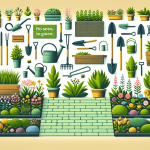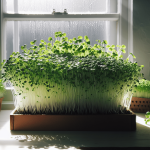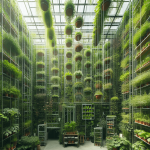This post may contain affiliate links. As an Amazon Associate, we may earn commissions from qualifying purchases.
So, you’ve put a lot of time and effort into creating your beautiful garden, but now you’re worried about soil erosion ruining all your hard work. Don’t worry, we’ve got you covered! In this article, we’ll explore some practical and effective ways for you to prevent soil erosion in your garden. From the importance of ground cover, terracing, and proper drainage, we’ll provide you with all the information you need to keep your garden soil intact and thriving. Get ready to learn some simple techniques that will not only protect your garden but also ensure its long-term health and sustainability. Let’s jump right in!
Understanding Soil Erosion
Soil erosion is a natural process that occurs when the top layer of soil is displaced by wind, water, or other forces. It can cause serious damage to gardens and landscapes if not properly managed. Understanding the factors contributing to soil erosion and the types of erosion that can occur is crucial in developing effective erosion prevention strategies.
Factors contributing to soil erosion
Several factors contribute to soil erosion, including:
- Water: Heavy rainfall, especially in areas with poor drainage, can wash away soil particles and lead to erosion.
- Slope: Steep slopes are more prone to erosion as gravity increases the force of water runoff and wind.
- Vegetation: Bare soil is more vulnerable to erosion, whereas vegetation, such as grasses and plants with deep root systems, can stabilize the soil.
- Soil composition: Sandy or compacted soils are more susceptible to erosion compared to soils with good organic content and structure.
Types of soil erosion
There are different types of soil erosion, each with its own characteristics and causes. These include:
- Sheet erosion: Occurs when a thin layer of soil is evenly removed by water flowing over a surface.
- Rill erosion: Develops when small concentrated channels are formed by water runoff, causing small grooves in the soil.
- Gully erosion: More severe than rill erosion, gully erosion results in deep channels that can significantly alter the landscape.
- Wind erosion: Common in dry and arid regions, wind erosion occurs when strong winds blow away loose topsoil particles.
- Ephemeral erosion: Caused by sudden intense rainfall, ephemeral erosion involves the rapid formation of channels and rivulets.
Effects of soil erosion on gardens
Soil erosion can have detrimental effects on gardens, leading to:
- Nutrient depletion: Eroded soil carries away essential nutrients required for healthy plant growth, reducing the fertility of the garden.
- Decreased water holding capacity: Eroded soil becomes compacted, making it less able to retain water, resulting in increased runoff and decreased plant hydration.
- Loss of organic matter: Topsoil, which contains vital organic matter, is often the first to be eroded, leading to a decrease in beneficial microorganisms and overall soil health.
- Structural damage: The gradual loss of soil can result in uneven ground levels, destabilizing plants and causing damage to structures like paths and fences.
Choosing the Right Plants and Mulch
One of the most effective ways to prevent soil erosion in your garden is by carefully selecting erosion-resistant plants and using appropriate mulching techniques.
Selecting erosion-resistant plants
Choosing plants that have deep and extensive root systems is vital in preventing soil erosion. These plants help stabilize the soil, reducing the risk of erosion. Grasses, such as Bermuda grass, and deep-rooted perennials like coneflowers and butterfly bushes, are excellent choices. Additionally, native plants are often well adapted to local soil and weather conditions, making them more resistant to erosion.
Using groundcovers and shrubs
Groundcovers and shrubs play a crucial role in preventing soil erosion. They provide a protective layer to the soil, reducing the impact of rainfall and wind. Low-growing plants like creeping phlox and thyme can help cover bare soil areas, while shrubs like forsythia and juniper can create a barrier against erosion on slopes.
Benefits of mulching
Mulching is an essential practice for preventing soil erosion. Organic mulches, such as wood chips and straw, help retain soil moisture, reduce erosion caused by heavy rain, and protect the soil from the impact of raindrops. Additionally, mulch acts as a insulating layer, reducing soil temperature fluctuations and promoting microorganisms that improve soil health.
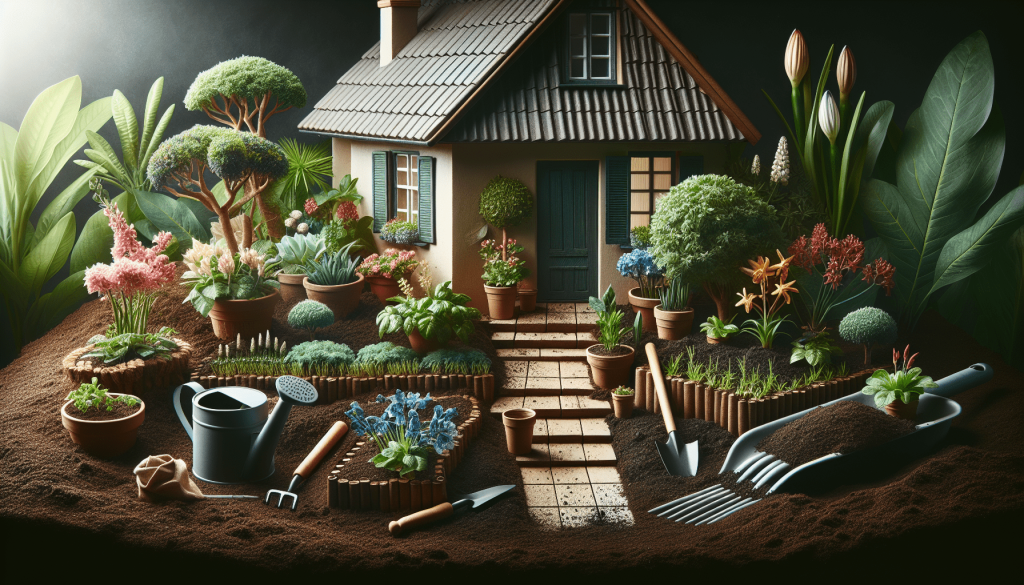
Implementing Proper Drainage
Proper drainage is crucial in preventing excessive water runoff that can contribute to soil erosion. Implementing certain techniques and structures can help manage water flow effectively.
Installing a French drain
A French drain is a trench filled with gravel or rock, designed to redirect water away from an area prone to soil erosion. This drainage system effectively intercepts surface and subsurface water, preventing it from accumulating and causing erosion. French drains are particularly useful in areas with poor soil drainage.
Creating swales and terraces
Swales and terraces are effective measures for managing water runoff on slopes. A swale is a shallow channel or depression that directs and slows water flow, allowing it to infiltrate the soil. Terraces are horizontal platforms constructed along the contour lines of a slope to create level surfaces. Both techniques help reduce water velocity, allowing more time for infiltration and minimizing erosion.
Utilizing contour planting
Contour planting is an excellent technique for preventing soil erosion on slopes. By planting along the contour lines of the land, water runoff is intercepted, and its energy is reduced. This allows the water to infiltrate the soil gradually, minimizing erosion. Trees, shrubs, and groundcovers can be strategically planted to form vegetative barriers that slow down water flow and stabilize the soil.
Maintaining Soil Health
Healthy soil is more resistant to erosion, making proper soil maintenance essential in preventing erosion and preserving the integrity of your garden.
Adding organic matter
Adding organic matter, such as compost or well-rotted manure, improves soil structure, water-holding capacity, and nutrient content. This enhances the soil’s ability to withstand erosion and provides a favorable environment for beneficial microorganisms. Regularly incorporating organic matter into your garden beds helps build and maintain healthy soil.
Avoiding overwatering
Overwatering can contribute to soil erosion by saturating the soil and increasing runoff. It is important to water your garden appropriately, taking into consideration the specific watering needs of each plant. By providing the right amount of water at the right time, you can avoid excessive runoff and minimize erosion risks.
Practicing crop rotation
Crop rotation involves systematically changing the location of crops within your garden each year. This practice helps prevent nutrient depletion, reduces the risk of soil-borne diseases, and improves soil structure. By maintaining healthy and balanced soil conditions, you can minimize erosion risks and support a thriving garden ecosystem.
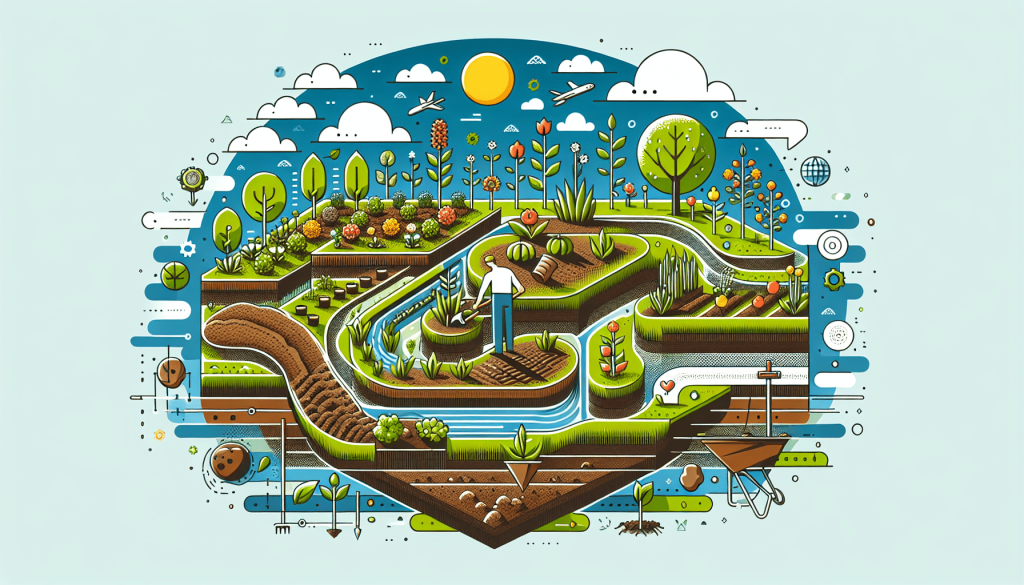
Managing Slopes and Hillsides
Slopes and hillsides are particularly vulnerable to soil erosion due to increased water runoff. Implementing specific techniques and structures can effectively prevent erosion in these areas.
Steps to prevent erosion on slopes
To prevent erosion on slopes, follow these steps:
- Install erosion-control matting: Matting made from natural fibers or synthetic materials can be placed on slopes to stabilize the soil and prevent erosion during heavy rainfall.
- Plant groundcover or grass: Choose erosion-resistant groundcovers or grasses that have strong root systems to anchor the soil.
- Utilize mulch: Apply a layer of mulch to protect the soil from the impact of raindrops, reduce water runoff, and encourage water infiltration.
- Construct retaining walls: Retaining walls can be built at intervals on the slope to create terraced sections, reducing water flow and providing stability.
Using retaining walls and geotextiles
Retaining walls are structures used to hold back soil and control water flow on slopes. They can be made of various materials, such as stone, timber, or concrete, and are designed to prevent erosion and stabilize the ground. Geotextiles, on the other hand, are permeable fabrics that are often installed behind retaining walls, acting as a barrier to soil particles while still allowing for water drainage.
Terracing techniques
Terracing involves creating level platforms on a slope to reduce the gradient and manage water runoff effectively. By constructing retaining walls or using natural materials like rocks and logs, you can create terraces that increase the soil’s ability to absorb and hold water, preventing erosion. Terraces also provide flat surfaces for planting or gardening.
Minimizing Runoff
Reducing excessive water runoff is essential in preventing soil erosion. Implementing certain strategies can help redirect and manage runoff effectively.
Redirecting downspouts
Downspouts from gutters can contribute to excessive water runoff. By redirecting downspouts towards areas with well-drained soil or installing rain barrels, you can capture and utilize rainwater, reducing the amount of runoff that can cause erosion.
Installing rain gardens
Rain gardens are designed to collect and absorb rainwater, preventing runoff and erosion. By selecting native plants that are adapted to wet conditions, rain gardens act as natural sponges, filtering and absorbing water while preventing soil erosion. Rain gardens can be strategically placed in areas prone to runoff, such as near downspouts or at the bottom of slopes.
Building infiltration trenches
Infiltration trenches, also known as dry wells or French drains, are designed to capture and store excess water, allowing it to gradually infiltrate into the soil. These trenches are excavated and filled with gravel and sand to create a permeable reservoir. Infiltration trenches effectively manage runoff, reduce erosion, and recharge groundwater levels.
Conserving Water
Conserving water in the garden not only helps the environment but also reduces the risk of soil erosion. Implementing water-efficient practices can significantly contribute to erosion prevention.
Using drip irrigation
Drip irrigation is a highly efficient watering system that delivers water directly to the plant’s roots. By minimizing water waste through evaporation or runoff, drip irrigation reduces the amount of water available for erosion. Additionally, drip irrigation promotes healthier plant growth by supplying water evenly and preventing water stress.
Implementing proper watering techniques
Proper watering techniques, such as deep watering and watering in the early morning or late evening, help reduce evaporation and runoff. By watering deeply and infrequently, you encourage plants to develop deep root systems, which stabilize the soil and reduce erosion risks. Watering during the cooler parts of the day also allows the water to be absorbed before evaporation can occur.
Capturing and reusing rainwater
Collecting and reusing rainwater is an effective way to conserve water and reduce the risk of erosion. Installing rain barrels or larger rainwater collection tanks allows you to harvest rainwater for later use during dry periods. By using stored rainwater for irrigation, you can reduce the demand for freshwater and minimize the impact of water runoff on the soil.
Preventing Wind Erosion
In regions with dry and windy climates, wind erosion can be a significant issue. Implementing specific techniques can help protect your garden from the damaging effects of wind erosion.
Planting windbreaks
Windbreaks, such as hedges, trees, or shrubs, act as physical barriers to wind, reducing its velocity and preventing the removal of topsoil. By planting windbreaks strategically around your garden, you can create sheltered areas that are less susceptible to wind erosion. Evergreen trees and shrubs are particularly effective as windbreaks, providing year-round protection.
Creating sheltered microclimates
Sheltered microclimates can be created within your garden using structures such as fences, walls, or trellises. These structures help block out strong winds and create pockets of calm, protecting plants from wind erosion. Additionally, structures like fences can be constructed using porous materials that allow some airflow, reducing wind force while still protecting the garden.
Using porous fences
When constructing fences or partitions in your garden, consider using porous materials that allow some airflow. This reduces the force of the wind and prevents it from sweeping away loose soil particles. Materials like lattice panels or chain link fencing allow for airflow while still providing a barrier against stronger gusts.
Practicing Good Soil Management
Maintaining healthy soil is a fundamental aspect of erosion prevention. By implementing good soil management practices, you can reduce erosion risks and ensure the long-term health of your garden.
Avoiding excessive tilling
Excessive tilling can disrupt soil structure, increase the risk of erosion, and deplete organic matter. To prevent erosion, minimize tilling to only when necessary, and use techniques like no-till gardening or minimal disturbance practices. These methods preserve soil structure, reduce compaction, and promote a healthy soil ecosystem.
Cover cropping and green manure
Cover cropping involves growing specific plants, such as legumes or grasses, during fallow periods to protect the soil and improve its health. These cover crops help prevent erosion by covering the soil surface, reducing water runoff, and enhancing soil structure. Additionally, green manure—growing plants and then incorporating them back into the soil—adds organic matter and nutrients, further improving soil health and erosion resistance.
Regular soil testing
Regular soil testing allows you to monitor the nutrient levels and pH of your garden soil. By understanding the soil’s needs, you can make informed decisions about amendments and fertilizers, ensuring optimal plant health and reducing the risk of erosion. Soil testing also helps identify any nutrient deficiencies or imbalances that may contribute to weakened soil structure and erosion susceptibility.
Seeking Professional Help
While implementing erosion prevention strategies in your garden can typically be done by yourself, seeking professional assistance can provide valuable expertise and guidance.
Consulting a landscape designer
A landscape designer can help assess your garden’s specific challenges and provide tailored solutions to prevent erosion. They can recommend suitable erosion-resistant plants, suggest effective drainage techniques, and help design features like retaining walls or rain gardens. Working with a landscape designer ensures that your erosion prevention efforts are well-planned and successful.
Working with a soil erosion expert
If you are dealing with significant erosion issues or have a large-scale project, consulting with a soil erosion expert is highly recommended. These professionals specialize in soil conservation and can assess the severity of erosion, provide expert advice on suitable erosion control methods, and recommend the most appropriate erosion prevention measures for your specific circumstances.
Attending gardening workshops
Gardening workshops and educational programs are a valuable resource for learning about erosion prevention and other gardening techniques. Local nurseries, botanical gardens, or agricultural extension offices often offer workshops on soil management, erosion prevention, and sustainable gardening practices. Attending these workshops allows you to gain knowledge, ask questions, and connect with fellow gardeners who share your interest in erosion prevention.
By understanding the factors contributing to soil erosion, implementing appropriate erosion prevention strategies, and seeking professional help when needed, you can effectively protect your garden from the damaging effects of erosion. With careful planning and ongoing maintenance, you can create a resilient and beautiful garden that stands against the forces of nature. Happy gardening!





